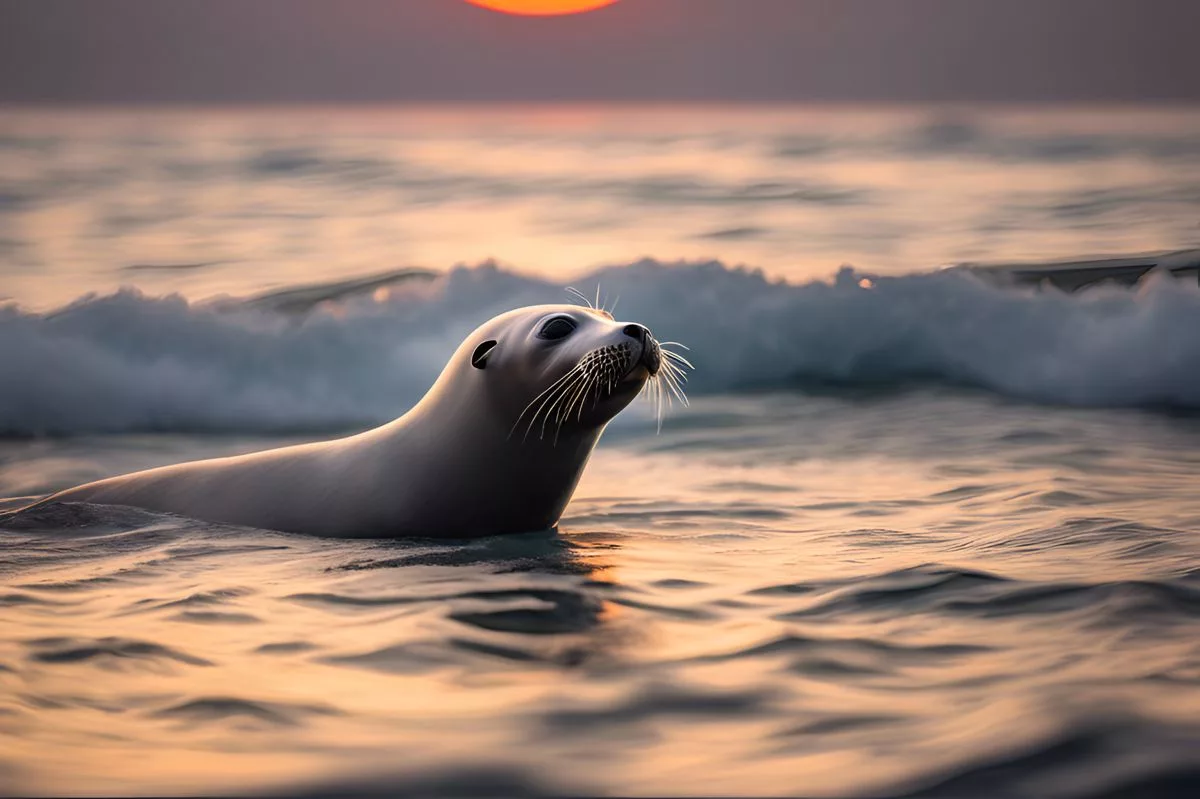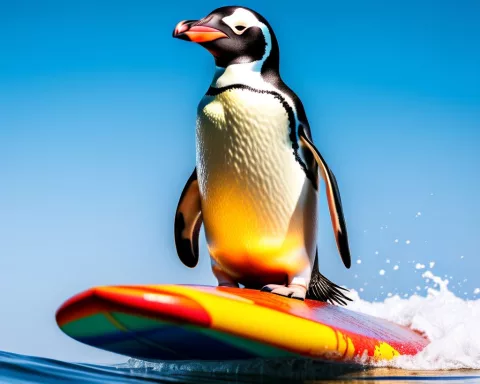At Santos Beach in Mossel Bay, a sunny day turned alarming when two people were attacked by seals just an hour apart. The local rescue team quickly sprang into action, helping the injured and raising awareness about the risks of rabies in seals, which has become a growing concern. Though these seal attacks are rare, they remind everyone to keep a safe distance from these playful creatures and respect their space. As the community reflects on this unusual event, it’s clear that understanding and protecting marine life is vital for both people and seals to thrive together by the ocean.
What Should I Know About Seal Attacks at Santos Beach?
Seal attacks at Santos Beach are rare but concerning. Recently, two individuals were attacked, leading to injuries and medical treatment. Public awareness about rabies in seals is crucial, as cases have risen in the area. Always maintain a safe distance from seals to prevent incidents.
Unusual Encounters and Immediate Responses
On a bright October day at the scenic Santos Beach in Mossel Bay, an unexpected incident caught everyone’s attention. Two individuals enjoying their time on the beach were attacked by seals in two separate occurrences, just one hour apart. This unusual event prompted immediate concern among the local community and officials. The Stranded Marine Animal Rescue Team (S.M.A.R.T) quickly took action, demonstrating their readiness to handle such emergencies. While details about the younger victim remain sparse, it’s known that a 56-year-old man also suffered injuries requiring medical attention at Life Bay View Private Hospital. Both victims underwent rabies prophylaxis as a preventive step.
Seal attacks are rare, making these incidents particularly alarming. The events have sparked a series of questions about the possible causes, leading many to reflect on the changing interactions between humans and marine wildlife. The swift response from S.M.A.R.T underscores the importance of having specialized teams that can address wildlife emergencies efficiently, safeguarding both humans and animals.
As the community grapples with these unsettling occurrences, the need for raising awareness about safe interactions with marine life becomes increasingly evident. Understanding seal behavior and potential triggers for such attacks can help prevent future incidents, ensuring that both residents and tourists can enjoy the natural beauty of Mossel Bay without fear.
The Growing Rabies Concerns in Mossel Bay
The recent seal attacks have occurred against a backdrop of increasing rabies cases among Cape Fur Seals in the region. Since July, four seals have tested positive for rabies, resulting in their euthanization. This surge in rabies cases poses a significant public health concern, prompting authorities to heighten awareness about the potential risks associated with these marine mammals. Just a day before the attacks, a seal was mistakenly killed by the public under the assumption it was rabid, highlighting prevalent fears and misinformation.
Since May, authorities have documented 24 confirmed rabies cases in Cape Fur Seals, a statistic that emphasizes the urgent need for public education on marine wildlife diseases and their implications for human safety. The Hout Bay Seal Rescue Centre (HBSRC) has noticed a worrying rise in injuries among these seals this year, identifying a troubling pattern of seals being found injured or dead in certain areas.
Despite the rising concern, experts advise the public that rabies is unlikely to persist in water, reassuring that only a small percentage of seals have contracted the virus. However, this does not diminish the necessity for extensive research to better comprehend the transmission of rabies in marine environments. Understanding these dynamics is crucial for developing effective strategies to protect both wildlife and human communities.
Navigating Human-Seal Interactions
The HBSRC continues to emphasize the importance of maintaining a safe distance from seals, reminding the public that feeding or harming them is against the law. Respecting these creatures’ space not only protects humans but also preserves the natural behavior and well-being of the seals. Observers are advised to keep at least 20 meters away from seals, ensuring a secure experience for everyone involved.
Public safety guidelines are in place to manage any unusual or aggressive seal behavior. Community members are encouraged to report such incidents to relevant authorities like the Cape of Good Hope SPCA, City of Cape Town, CapeNature, and Table Mountain National Park. These organizations possess the resources and expertise to address wildlife concerns, playing a vital role in managing interactions and mitigating potential health risks.
Cape Fur Seals have long been subjects of intrigue and study due to their adaptability in the coastal ecosystems of Southern Africa. Their playful nature endears them to humans but also necessitates caution to prevent blurring natural boundaries. The current rabies outbreak serves as a stark reminder of the delicate balance required in human-wildlife coexistence.
Conservation Efforts and Public Awareness
The presence of seals in Mossel Bay is deeply interwoven with the region’s identity. Their graceful movements and adept swimming make them captivating spectacles in the ocean’s natural theater. However, ensuring that these interactions remain safe and respectful is crucial for both the seals’ survival and human enjoyment of the coastal environment.
The situation in Mossel Bay underscores broader environmental conservation challenges. As human populations grow and encroach on natural habitats, the frequency of human-wildlife encounters rises, necessitating robust conservation strategies that prioritize ecological health and public safety. These strategies must consider the dynamic interactions between humans and wildlife, aiming for sustainable coexistence.
Public education plays a pivotal role in addressing fears and fostering a harmonious relationship with marine life. Dispelling myths through accurate information and proactive measures can reduce harmful actions driven by misunderstandings. Community engagement and awareness campaigns are essential in promoting a balanced coexistence between humans and the natural world, ensuring that both can thrive.
Reflecting on Our Role in the Natural World
Mossel Bay’s stunning landscapes and rich biodiversity continue to attract tourists and ecologists alike. While the recent seal incidents are concerning, they also offer a chance for reflection and action. By adhering to safety guidelines and showing respect for marine mammals, we can preserve the bay as a sanctuary for both humans and wildlife.
The broader implications of these events extend beyond immediate safety concerns, prompting us to consider our interactions with the natural world and the responsibilities that come with them. By deepening our understanding of marine ecosystems, we not only protect wildlife but also enrich our own experiences of the natural world.
As the sun sets over Santos Beach, casting its warm glow over the waves, the seals return to their watery domain, reminding us of the interconnectedness of life. Through informed and respectful actions, we can ensure these precious interactions endure for future generations, fostering a world where humans and wildlife coexist harmoniously.
FAQ: Understanding Seal Attacks and Safety Measures at Santos Beach
What happened during the recent incidents at Santos Beach?
Two individuals were attacked by seals at Santos Beach in Mossel Bay within an hour of each other. The incidents raised concerns about public safety, leading to immediate action from the local rescue team, S.M.A.R.T, to assist the injured and raise awareness about the potential risks associated with seals.
Are seal attacks common at Santos Beach?
No, seal attacks at Santos Beach are rare. However, the recent events have highlighted the importance of maintaining a safe distance from seals to prevent such incidents. Generally, seals are playful creatures, but their behavior can be unpredictable, especially if they feel threatened.
What are the risks associated with seals, particularly regarding rabies?
There has been a notable increase in rabies cases among Cape Fur Seals in the region. Since July, four seals have tested positive for rabies. Though rabies is unlikely to persist in water, authorities emphasize the importance of public awareness regarding the risks associated with marine mammals, particularly following the recent attacks.
How can I safely interact with seals if I visit Santos Beach?
To ensure safety, it is advised to maintain a distance of at least 20 meters from seals. Feeding or harming seals is illegal and can provoke aggressive behavior. Observers should respect the seals’ space to protect both themselves and the animals.
What should I do if I encounter an unusual or aggressive seal?
If you witness any unusual or aggressive behavior from seals, it’s crucial to report the incident to local authorities. Organizations such as the Cape of Good Hope SPCA, City of Cape Town, CapeNature, and Table Mountain National Park are equipped to handle wildlife concerns and can provide guidance on safe interactions.
How can the community contribute to the conservation of marine life?
Public education and awareness are vital for fostering a harmonious relationship with marine life. Engaging in community efforts, sharing accurate information, and participating in awareness campaigns can help protect seals and their habitats. Promoting responsible behavior towards wildlife ensures a sustainable coexistence, benefiting both humans and local ecosystems.









